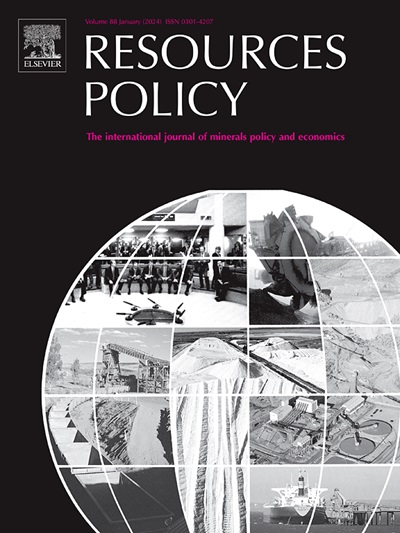Mine closure transparency and disclosure: An open-source evaluation of financial, technical, and social reporting
IF 10.2
2区 经济学
0 ENVIRONMENTAL STUDIES
引用次数: 0
Abstract
This study evaluates the transparency of mine closure disclosures across public reports, with a focus on identifying gaps in communication related to financial, technical, and social obligations, in Brazil. Using a quantitative content analysis of 16 documents (2019–2023) and six reporting frameworks from four global mining companies, a binary classification system (0/1) and weighted scoring protocol were applied to 15 criteria spanning two domains: Report Content (e.g., data verification, update frequency) and Sector-Specific Risks (e.g., financial provisioning, post-closure stability). Key findings reveal that mandatory reports (e.g., SEC Form 20-F) outperformed voluntary frameworks (e.g., GRI) in financial transparency, with 67 % compliance versus 22 % application rate), yet both lacked technical rigor, with only 33 % addressing physical-chemical stability risks. Mining-specific frameworks (ICMM, IRMA) achieved 85 % application rate to technical criteria, highlighting their efficacy in mitigating sector risks like tailings failures. Conversely, 78 % of reports omitted enforceable community transition plans, exacerbating social dislocation problems. The study advocates for regulatory reforms to mandate technical disclosures (e.g., geotechnical stability audits) in capital market filings and urges integration of ICMM/IRMA standards into broad ESG frameworks. These steps are critical to aligning disclosure practices with the mining industry's environmental, financial, and social risk profile. This study aligns with disclosure legitimacy theory, which posits that firms disclose information to legitimize operations in high-risk sectors, and impression management theory, which explains the prioritization of aspirational narratives in voluntary frameworks. By evaluating how these theories manifest in mine closure reporting, the research advances transparency discourse in extractive industries.
矿山关闭透明度和披露:财务、技术和社会报告的开源评估
本研究评估了公共报告中矿山关闭信息披露的透明度,重点是确定巴西在财务、技术和社会义务方面的沟通差距。通过对来自四家全球矿业公司的16份文件(2019-2023)和6个报告框架的定量内容分析,将二元分类系统(0/1)和加权评分协议应用于跨越两个领域的15个标准:报告内容(例如,数据验证,更新频率)和特定行业风险(例如,财务供应,关闭后稳定性)。主要研究结果显示,强制性报告(如SEC表格20-F)在财务透明度方面优于自愿框架(如GRI),合规率为67%,而应用率为22%),但两者都缺乏技术严谨性,只有33%的报告涉及物理化学稳定性风险。矿业专用框架(ICMM, IRMA)对技术标准的应用率达到85%,突出了它们在减轻尾矿失败等行业风险方面的功效。相反,78%的报告忽略了可执行的社区过渡计划,加剧了社会混乱问题。该研究主张进行监管改革,强制要求在资本市场备案中披露技术信息(例如,岩土稳定性审计),并敦促将ICMM/IRMA标准纳入广泛的ESG框架。这些步骤对于使信息披露实践与采矿业的环境、财务和社会风险状况保持一致至关重要。该研究与披露合法性理论和印象管理理论相一致,前者认为公司披露信息是为了使高风险行业的运营合法化,后者解释了自愿框架中抱负叙事的优先级。通过评估这些理论如何在矿山关闭报告中表现出来,研究推进了采掘业的透明度话语。
本文章由计算机程序翻译,如有差异,请以英文原文为准。
求助全文
约1分钟内获得全文
求助全文
来源期刊

Resources Policy
ENVIRONMENTAL STUDIES-
CiteScore
13.40
自引率
23.50%
发文量
602
审稿时长
69 days
期刊介绍:
Resources Policy is an international journal focused on the economics and policy aspects of mineral and fossil fuel extraction, production, and utilization. It targets individuals in academia, government, and industry. The journal seeks original research submissions analyzing public policy, economics, social science, geography, and finance in the fields of mining, non-fuel minerals, energy minerals, fossil fuels, and metals. Mineral economics topics covered include mineral market analysis, price analysis, project evaluation, mining and sustainable development, mineral resource rents, resource curse, mineral wealth and corruption, mineral taxation and regulation, strategic minerals and their supply, and the impact of mineral development on local communities and indigenous populations. The journal specifically excludes papers with agriculture, forestry, or fisheries as their primary focus.
 求助内容:
求助内容: 应助结果提醒方式:
应助结果提醒方式:


